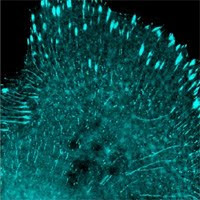AlleleBlog
Induced pluripotent stem cells can be directly generated from adult cell cultures through the introduction of a group of factors, e.g. Oct4, Sox2, Klf4, and c-Myc (the Yamanaka factors) [Takahashi and Yamanaka, 2006]. Additional factors such as Nanog and Lin28 can either substitute some of the Yamanaka factors or supplement them for higher reprogramming efficiency [Yu et al. 2007].
The original pluripotent stem cells induction methods involved retrovirus or lentivirus that would leave foot-print in the host genome, a concern for clinical use of iPSCs. Several groups have tried to create iPSCs without integrating viruses, such as using small molecules, directly delivering proteins instead of cDNAs, viruses with RNA genomes, episomal systems, or removable elements such as PiggyBac or Sleeping Beauty transposons. From the literature and our first-hand experience in the iPS market, none of these methods has become a widely applicable tool, mostly due to impractically low reprogramming efficiency.
In addition to low efficiency, RNA viruses, such as the sendai virus, are still viruses and have virus-associated risks. Episomal plasmids or removable transposons still involve DNA, so the possibility of genomic integration by recombination remains. In case of some transposons such as PiggyBac, there is an additional question about the degree of removal – whether it is certain that all integrated transposons, often inserted within genes, are deleted; in case of transposons similar to Sleeping Beauty, the small footprints they leave behind may post a concern.
The method of choice for generating zero-footprint iPSCs should clearly be RNA-based without the involvement of virus. Luigi Warren and his former colleagues at Harvard demonstrated that by using in vitro transcribed iPS factor mRNAs with modified CTP and UTP, and 5’-cap can effectively reprogram a number of different human as well as mouse cells. The efficiency even exceeds those by using retrovirus or lentivirus by 10 to 100 fold. Furthermore, the RiPSCs created with mRNAs appear to be closer to hESCs as shown by expression profiling.
Very recently, a few miRNAs that have high expression levels in stem cells were shown to be able to reprogram mouse and human somatic cells when expressed together from a lentivirus [Anokye-Danso et al. 2011]. while that work used lentivirus, thus not directly applicable to the current project, Miyoshi et al. later showed that by using synthesized mature miRNA (overlapping but not the same set of miRNAs as used by Anokye-Danso et al.) reprogramming cold be achieved without viral infection. We believe that this is a promising method and would like to pursue it further and to find out whether these mi-iPSCs relate to hESCs as closely as R-iPSCs. Because transfecting synthetic miRNAs “does operate at considerably lower efficiency” in terms of iPSC creation [Miyoshi et al. 2011],alternatiuve protocols may include transfecting the iPS factor mRNAs together with various miRNAs at different doses and frequencies.
This week save 25% on photoconvertible fluorescent protein
mClavGR2 cloning plasmids. Email oligo@allelebiotech.com with code FPBLOG0831.
Blog References: Warren, L. et al. “Highly efficient reprogramming to pluripotency and directed differentiation of human cells with synthetic modified mRNA” 2010 Cell Stem Cell 7(5): 618-30
Anokye-Danso, F. et al. “Highly efficient miRNA-mediated reprogramming of mouse and human somatic cells to pluripotency” 2011 Cell Stem Cell 8(4): 376-88
Miyoshi, N. et al. “Reprogramming of mouse and human cells to pluripotency using mature microRNAs” 2011 Cell Stem Cell 8(6): 633-8
Kim, H. et al. “miR-371-3 expression predicts neural differentiation propensity in human pluripotent stem cells” 2011 Cell Stem Cell 8(6): 695-706
Takahashi, K. and Yamanaka, S. “Induction of pluripotent stem cells from mouse embryonic and adult fibroblast cultures by defined factors” 2006 Cell 126(4): 663-76
Yu, J. et al. “Induced pluripotent stem cell lines derived from human somatic cells” 2007 Science 318(5858): 1917-20



